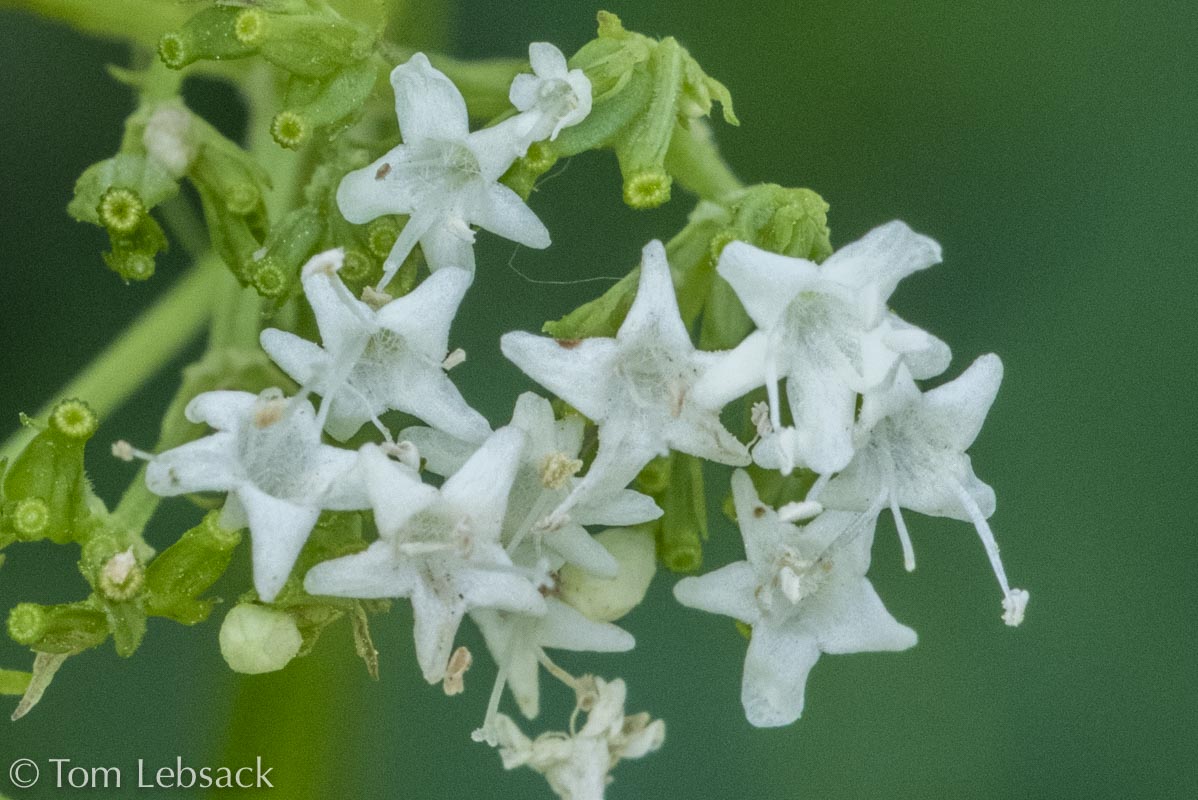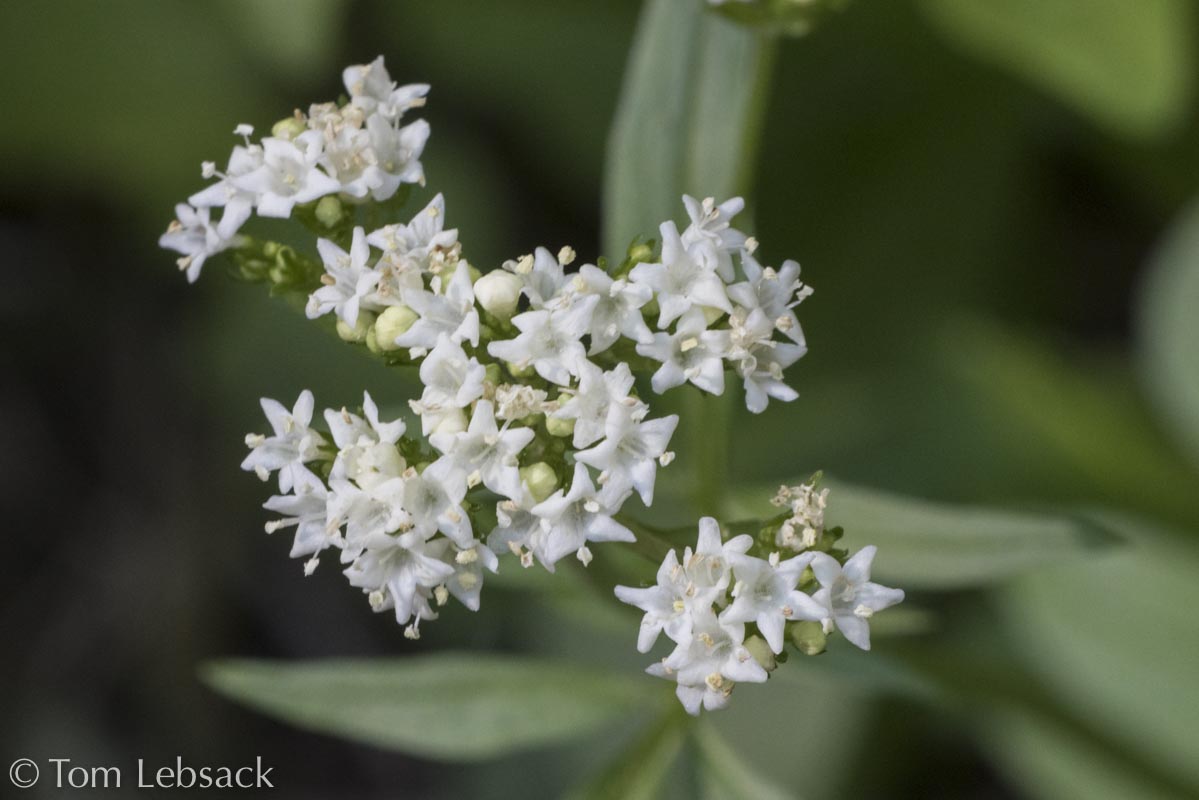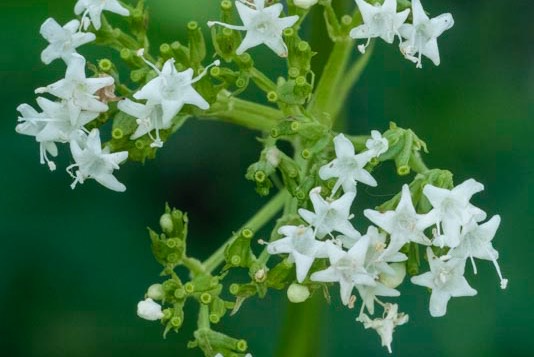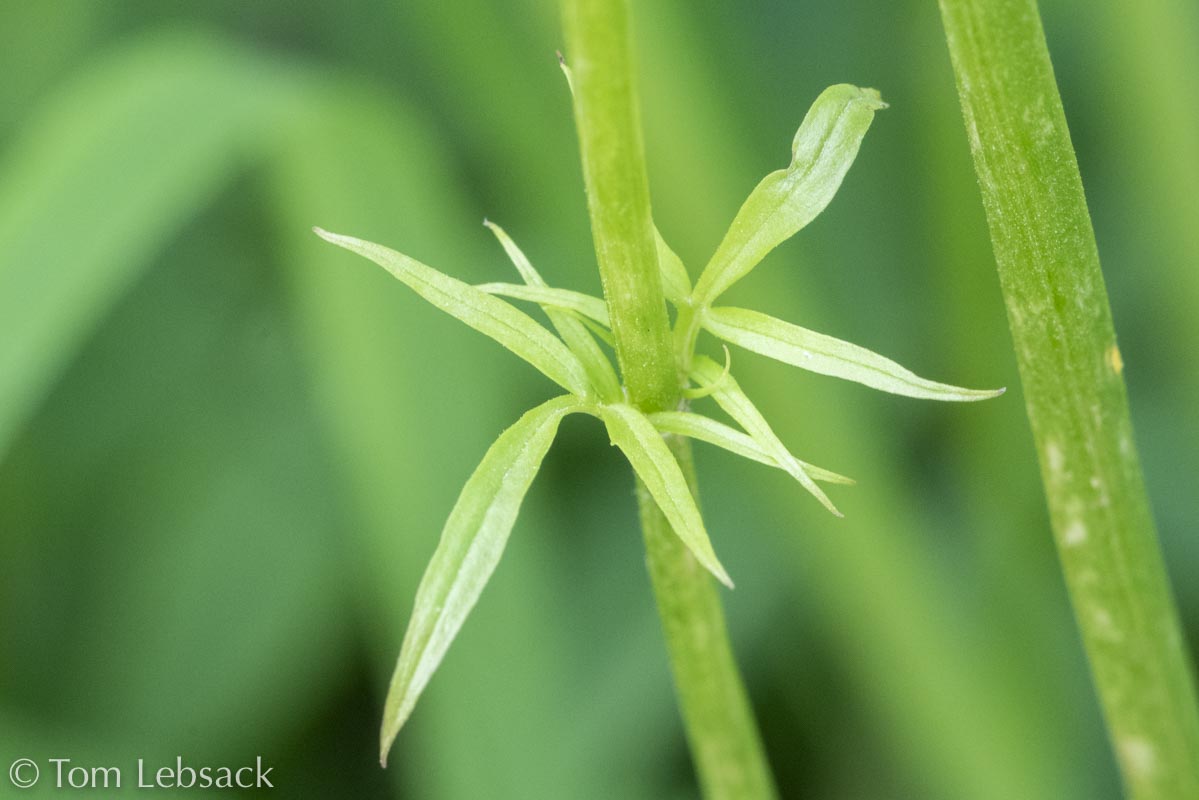(Western Valerian)
| Scientific Name | Valeriana occidentalis | USDA PLANTS Symbol | VAOC2 |
| Common Name | Western Valerian | ITIS Taxonomic Serial No. | 35362 |
| Family | Valerianaceae (Valerian) | SEINet Reference |
Click Here |
| Description |
Life zones and habitat: Montane to subalpine (6400 to 11000 ft.); moist areas in meadows and hillsides. Plant: Erect perennial up to 30 inches tall; curving, grooved stem. Leaves: Numerous, large basal, spatulate leaves on short petioles; smaller opposite pairs of pinnately-compound stem leaves, each with lanceolate to ovate leaflets, and upper stems divided into linear-lanceolate lobes or leaflets. Inflorence: Very small white flowers less than 1/4-inch across in a compact panicle with opposite branching; flowers are dioecious (separate male and female flowers) or bisexual; 5 pointed lobes/petals; male blossoms with 3 protruding stamens. Bloom Period: July to September. References: "Flora of Colorado" by Jennifer Ackerfield, "Guide to Colorado Wildflowers" by G.K. Guennel, "A Guide to Rocky Mountain Plants" by Nelson and Williams. |
BONAP Distribution Map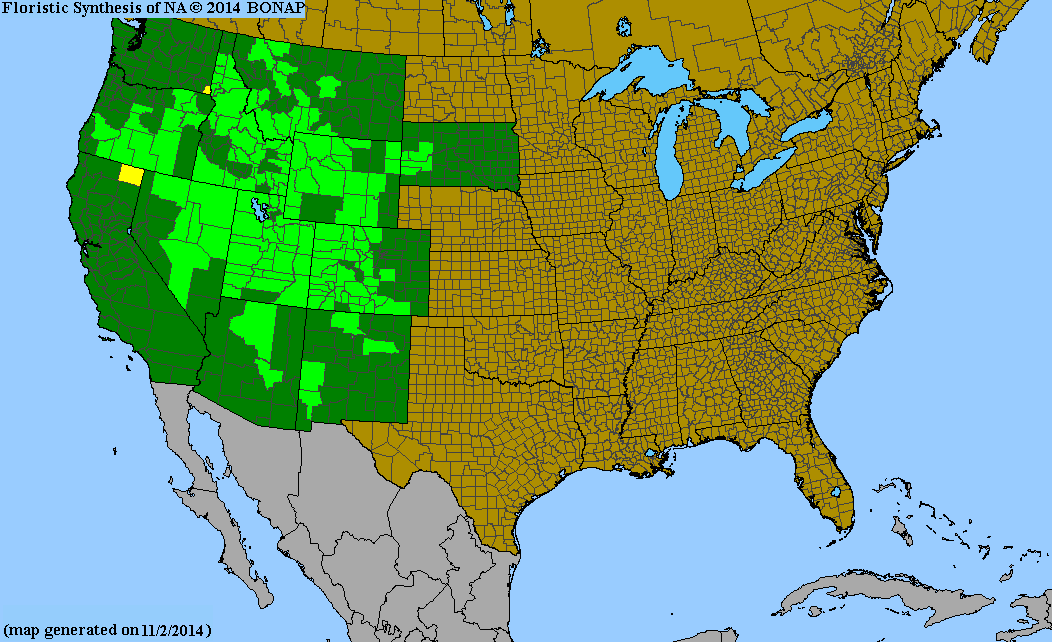
Map Color Key |
Colorado Status: Native |
© Tom Lebsack 2025
Banner photo: Castilleja rhexifolia and a brewing storm over the San Juan Mountains
I try to provide accurate, up-to-date, and relevant information, but cannot guarantee the completeness or accuracy of any information presented on this website. I use authoritative references to insure high standards of accuracy and review and update the information frequently.
